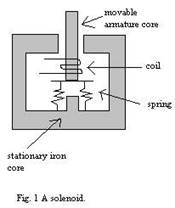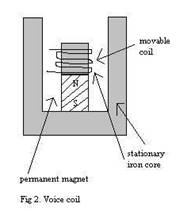
Theoretical material for the lesson, definitions for concepts
The Story of Magnet
There is an island called Magnesia in Greece. Years ago, shepherds here complained that their wooden shoes with nails stayed stuck to the grounds. They were unable to walk further. This was the story behind the discovery of magnetism. So, how did this relate to the presence of magnetic fields? Actually, this island had lots of magnetic ore deposits!
Sounds really interesting! Doesn’t it? Let us now look at this topic in greater detail and discuss magnets and their properties. The property of an object by virtue of which it can attract a piece of iron or steel is called magnetism. The object itself is called a magnet. Now, we will look at the types of magnets.
A natural magnet is an ore of iron that attracts small pieces of iron, cobalt, and nickel towards it. It is usually an oxide of iron named Fe3O4. Magnetite or lodestone is a natural magnet.
A magnet that is prepared artificially form the artificial magnets. Examples include an electromagnet, a magnetic needle, horseshoe and bar magnets etc. According to the molecular theory, every molecule of a magnetic substance, irrespective of whether or not it is magnetized.
The poles are the two points near but within the ends of the magnetic materials, at which the entire magnetism can be assumed to be concentrated. The poles always occur in pairs and they are of equal strength. Like poles repel each other and unlike poles attract each other. This is all the basic information about magnets. Now, we will look deeper into the properties of magnets.
A solenoid is simply a specially designed electromagnet. A solenoid usually consists of a coil and a movable iron core called the armature. Here's how it works.When current flows through a wire, a magnetic field is set up around the wire.If we make a coil of many turns of wire, this magnetic field becomes many times stronger, flowing around the coil and through its center in a doughnut shape. When the coil of the solenoid is energized with current, the core moves to increase the flux linkage by closing the air gap between the cores. The movable core is usally spring-loaded to allow the core to retract when the current is switched off. The force generated is approximately proportional to the square of the current and inversely proportional to the square of the length of the air gap.
Solenoids are inexpensive, and their use is primarily limited to on-off applications such as latching, locking, and triggering. They are frequently used in home appliances (e.g. washing machine valves), office equipment (e.g. copy machines), automobiles (e.g. door latches and the starter solenoid), pinball mahines (e.g., plungers and bumpers), and factory automation.
An electromechanical relay is a solenoid used to make or break mechanical contact between electrical leads. A small voltage input to the solenoid controls a potentially large current through the relay contacts. Applications include power switches and electromechanical control elements. A relay performs a function similar to a power transistor but has the capability to switch extremely large currents if necessary. However, transistors have a much shorter switching time than relays.
As illustrated in figure 2, a voice coil consists of a coil that moves in a magnetic field produced by a permanent magnet and intensified by an iron core. The force on the coil is directly proportional to the current in the coil. The coil is usually attached to a movable load such as the diaphragm of an audio speaker, the spool of a hydraulic proportional valve, or the read-write head of a computer disk drive. The linear response and bidirectional capability make voice coils more attractive than solenouds for control applications.


Additional guidelines for organizing a lesson
Lesson starts with introducing a lesson topic. Summary of the main properties of magnets in terms of field and types of materials, magnetic and non-magnetic properties
Then students can deduce topic of the lessen and objectives, for clarification you can show topic and the learning objectives on the presentation.
Then Subject-specific vocabulary & terminology will be presented to the students and their activities during the research work will be explained.
Then teacher using Power Presentation and whiteboard, used to introduce terms related to magnetic fields in connection with the design of an electromagnet. At this time students answer questions in a presentation, students take notes and ask questions online. Assignment for the teacher: distribute worksheets and assignments for practical work. Work in pairs. It is necessary to assemble the electromagnet. Instruments: nail, copper wiring, galvanometer, voltmeter, paper clips, magnetic needle.
How to make an artificial magnet? Student individual groups collect electromagnets using the materials provided, in accordance with these practical instructions. Teacher to encourage students to create devices. Constantly monitor, including how well they can organize and work together in a team. After students have received instructions for assembling an electromagnet, they should - collect solenoid - assemble an electromagnet (understand how a solenoid differs from an electromagnet) -determine the dependence of the magnetic field of the solenoid on the strength of the electric current (change the electric current, count the number of clips) - -determine the dependence of the magnetic field of the solenoid on the number of turns of the coil (measure the electric current, count the number of clips)).
Discussion: Formative evaluation questions.
Then should be reflection and at the lesson teacher gives homework.
Additional multilevel (on differentiation) tasks
The teacher assigns questions fill the table with some mistakes to weak students, questions fill the table without mistakes to the average students, questions fill the table correctly and high level question to the strong students.
Recommendations for formative assessment
Experiment will be done by group. In the group should be 4 students.
Answers, criteria for assignments, additional materials for the lesson
Teacher should do this experiment and make his/her answer sheet which would be correct by his/her experimental apparatus.
Материалы на данной страницы взяты из открытых источников либо размещены пользователем в соответствии с договором-офертой сайта. Вы можете сообщить о нарушении.